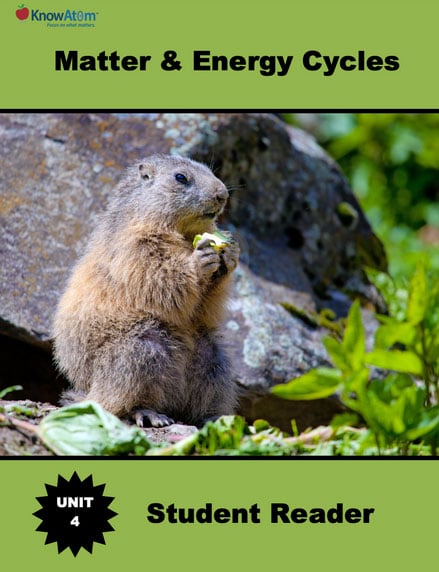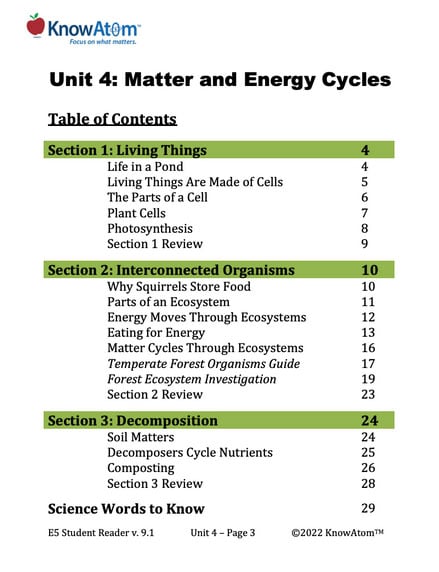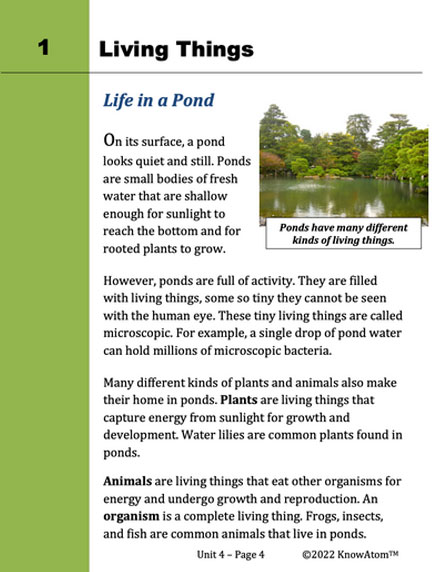Animal : a living thing that eats other organisms for energy, breathes oxygen, and undergoes growth and reproduction
Consumer : an organism that eats other organisms
Ecosystem : a community of different organisms that depend on interacting with each other and their physical environment for survival
Food Chain : the path that energy travels as one organism eats another
Food Web : a visual that shows the network of food chains in an ecosystem
Food Web : a visual that shows the network of food chains in an ecosystem
Function : the normal action of something or how something works
Inorganic : anything that is not living and never was living (e.g., water and rocks)
Organic : anything that is living or was once living (e.g., fallen leaves and animal remains)
Organism : a complete living thing
Photosynthesis : the process of turning sunlight, carbon dioxide, and water into glucose and oxygen
Plant : a living thing that captures energy from sunlight for growth and development
Producer : an organism that captures energy from sunlight through a process called photosynthesis
Structure : the way in which parts are put together to form a whole








